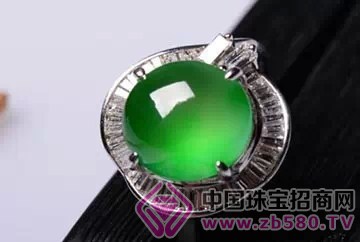
Collection of "new" jade, or collection of "old" jade, this is a problem that many people have not figured out. In the actual collection, some collectors are caught in such a collection misunderstanding. They are “not old and do not acceptâ€, and think that the “old†jade has more collectible value. Therefore, the collectors who are unknown are also fascinating, and feel that the “old†jade is very mysterious.
In fact, due to the limitations of early mining conditions (completely artificial mining), jade production is very low. When mining, as long as it is green, regardless of the texture, the color is bright or dim, it will be processed into finished products. Therefore, although the old jadeite has fine products, it is rare. On the other hand, jadeite is a private collection that has family inheritance and is rarely distributed to the market after being collected.
From the point of view of professional collections, there is a kind of old green is really worth collecting, it is the old species that the experts say. The jade line says that the "old" thing is good, and actually refers to the old jade.
The species is one of the most basic concepts in jade. The so-called species is the fineness and transparency of the jadeite particles. The finer the crystal, the higher the transparency, the older the seed; the thicker the crystal, the lower the transparency, the newer the seed. . Therefore, the new species of jade and old jadeite refer to the difference in the texture of jade itself.
The price of old jadeite is much higher than that of new jadeite. That is to say, the price of jadeite with fine and high transparency is much higher than that of jade with rough and poor transparency. The difference in price is from jade itself. Material determined.
A little collectors need to pay attention to it. Many businesses now deliberately confuse the audience and describe the dimly lit jade as an "old species". This is a typical concept of stealing, and collectors should not be misled.

There is also a set of confusing concepts in the jade, that is, new pits, old pits and new pits, and old pits. Jadeite, like many natural minerals, has primary and secondary mines. The secondary mine of jadeite, which is a jadeite mineral that is transported by natural forces such as river water, is represented by waterstone or water-turning sandstone, usually called old pit (also known as old pit). Old factory). The original mine of Jadeite is called the new pit (also known as the new plant).
The secondary mine jadeite of Laokeng is often produced with high-quality jadeite. These high-quality jadeites have outer skins, fine texture, small crystal particles, water heads (good transparency) and heavy specific gravity. Therefore, they are called old pits.
The primary ore of the new pit is generally relatively coarse in texture, their texture is relatively rough, the crystal particles are large, the water content is poor (refer to poor transparency), and the specific gravity is also slightly lighter. Therefore, it is called a new pit.
In fact, the original mine (Xinkeng) also has high-quality jadeite, which is not much different from the secondary mine quality jadeite (old pit). It is also called the old pit species. Since the old pit has almost no output, it is new in the market. Many of the old pits are also from the new pit. There is also a half-mountain and half-water stone. The texture and seeding are also between the new pit and the old pit, becoming a new and old species.
Therefore, the old pit and the new pit are the concept of geography and the distribution of geology and minerals, while the new pit species and the old pit species are the concept of jade quality. The old pit jade with high quality water, high transparency and fine crystal is the most important thing for collectors to pay attention to.
Rayon Fabric,Rayon Plein Dyed,Rayon High Quality,Rayon Digital
Shaoxing Shangda Textile Co., Ltd , https://www.shangdatex.com